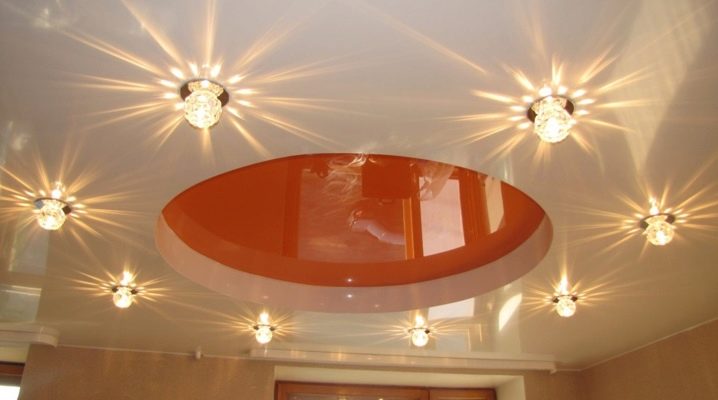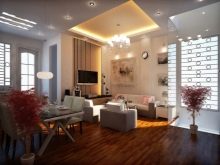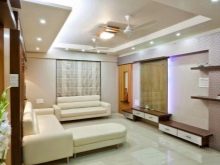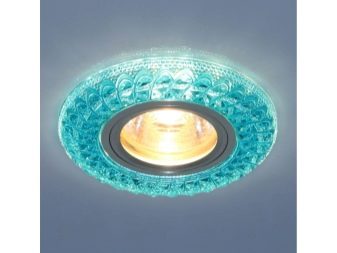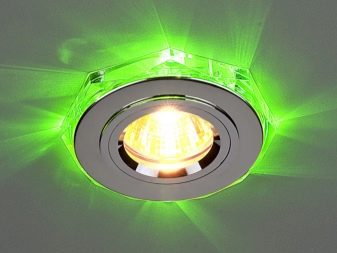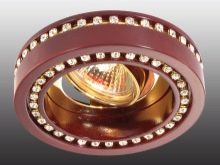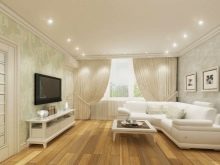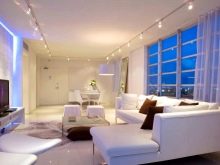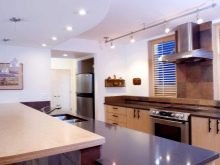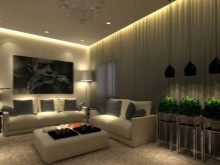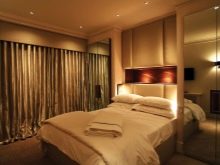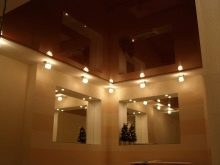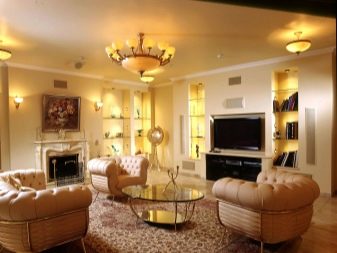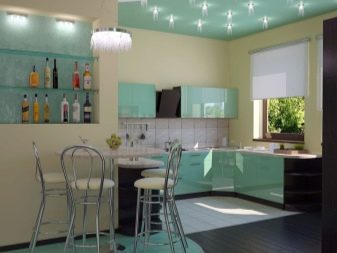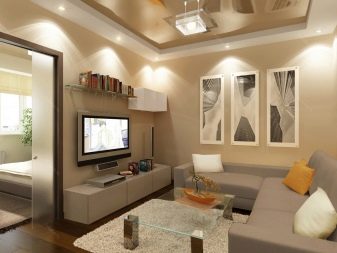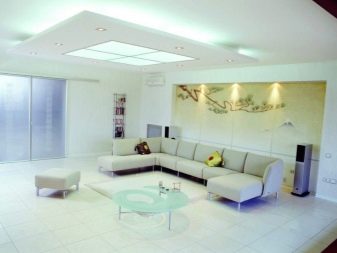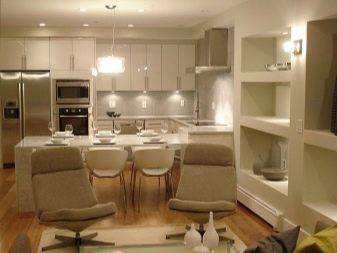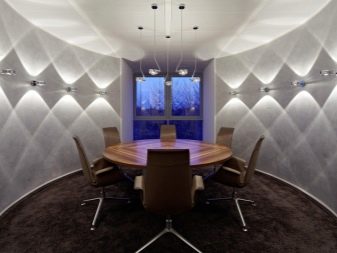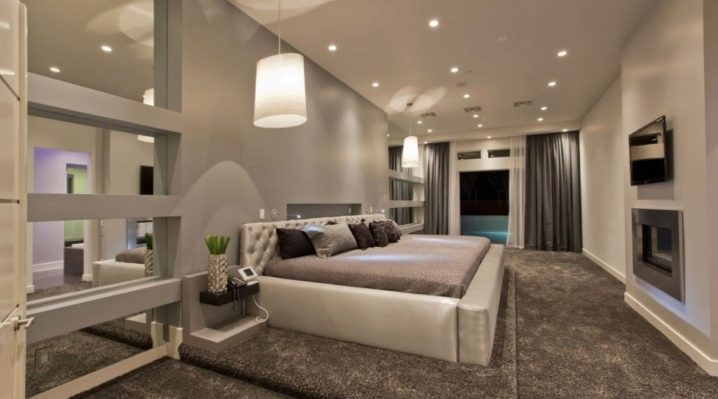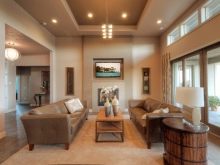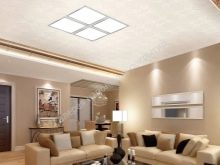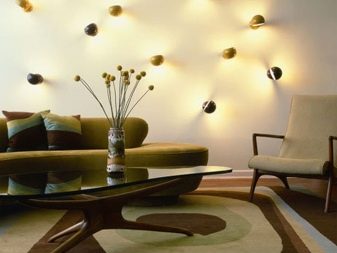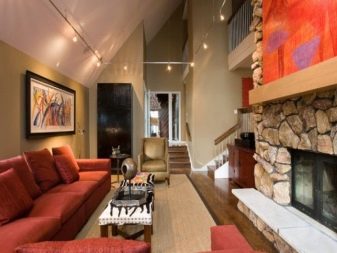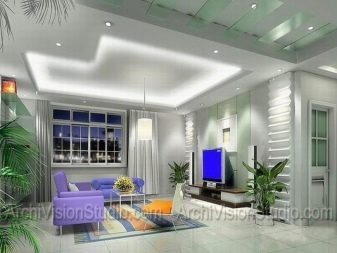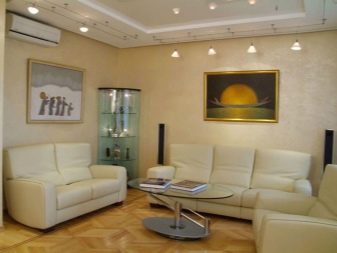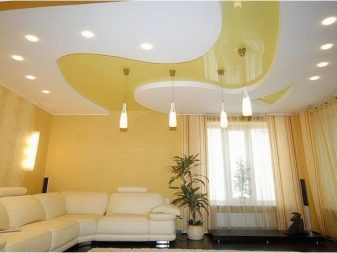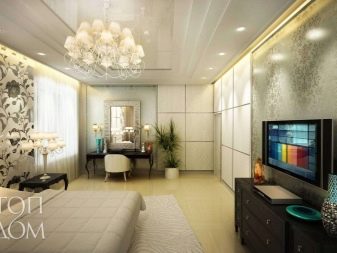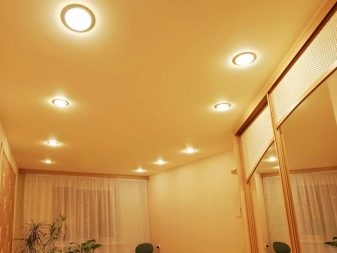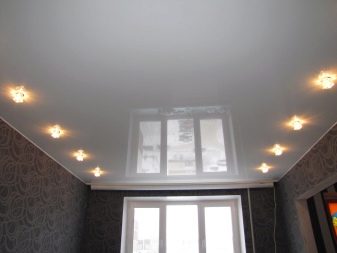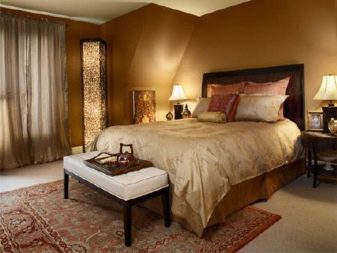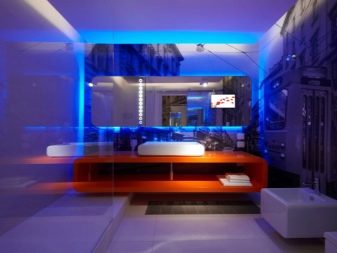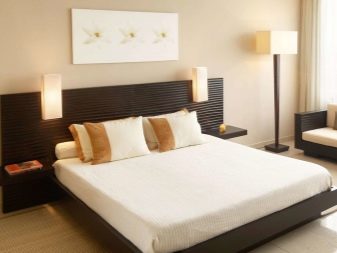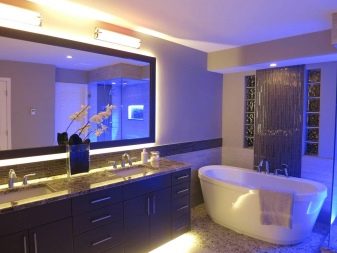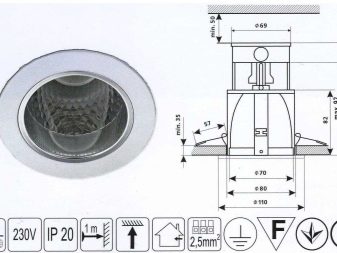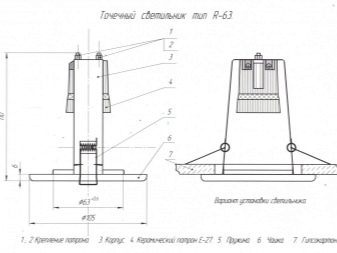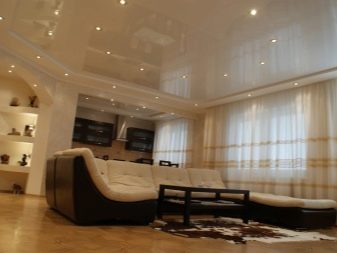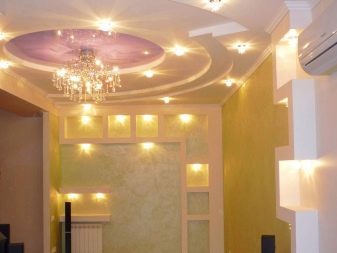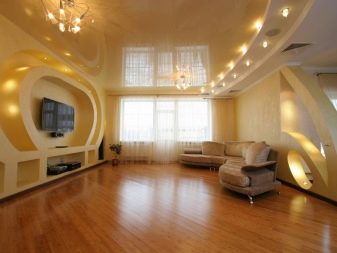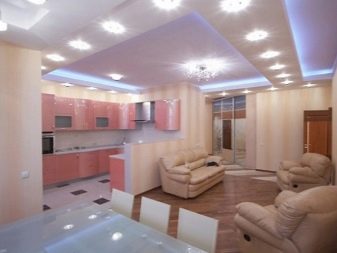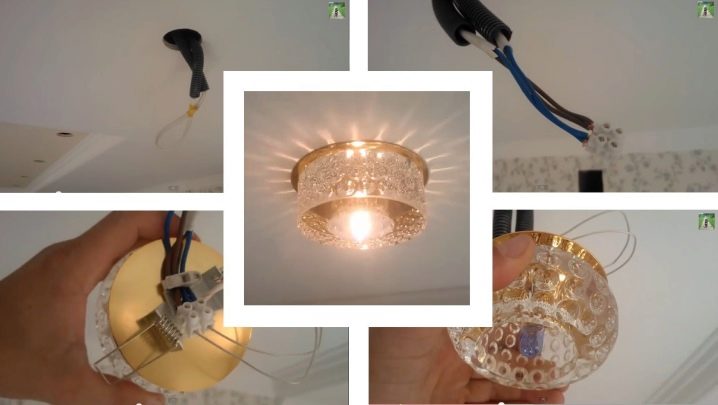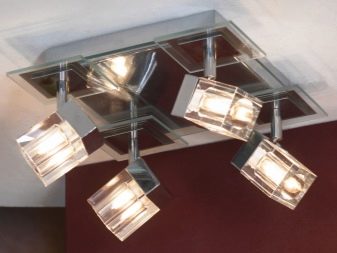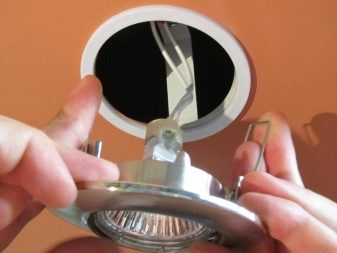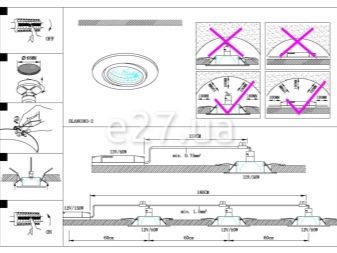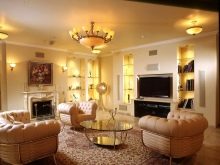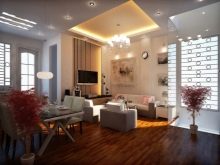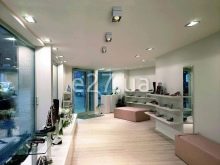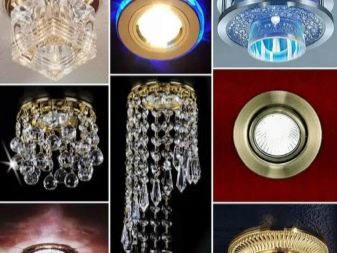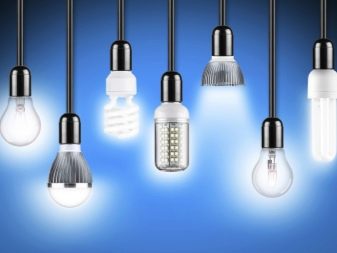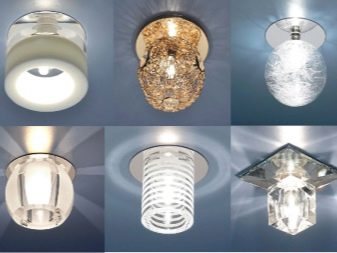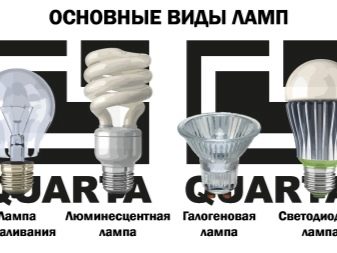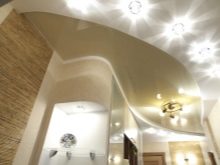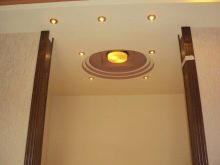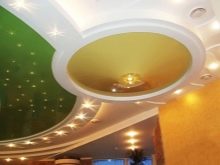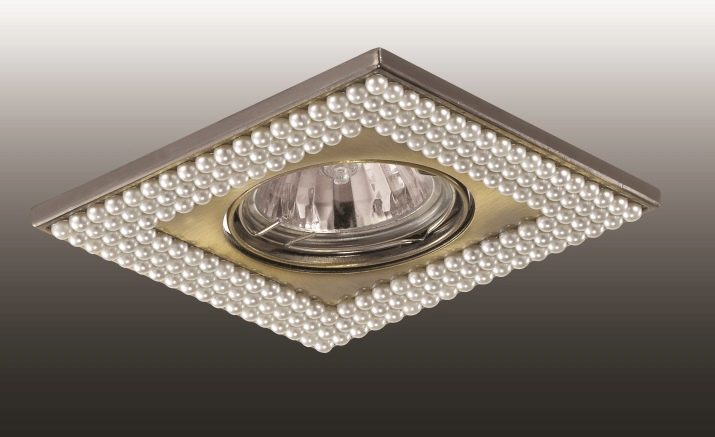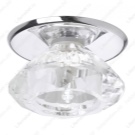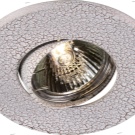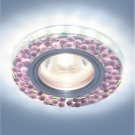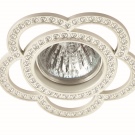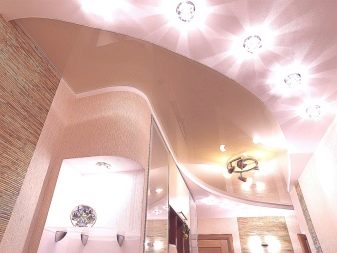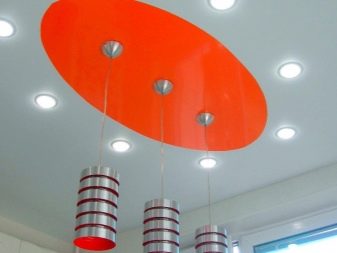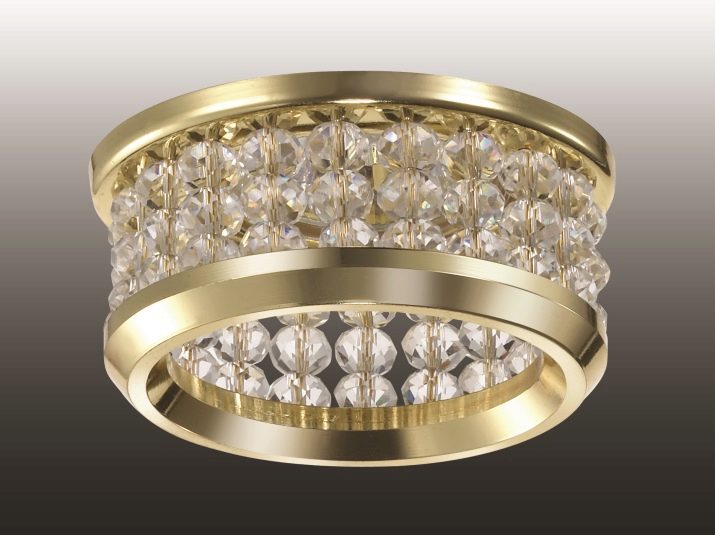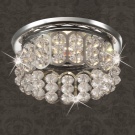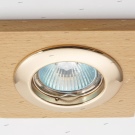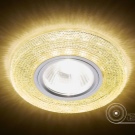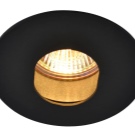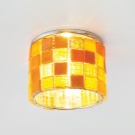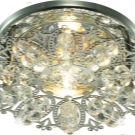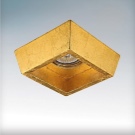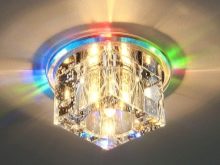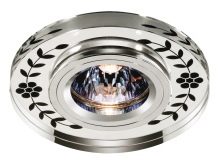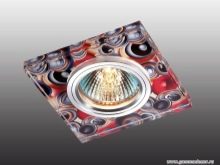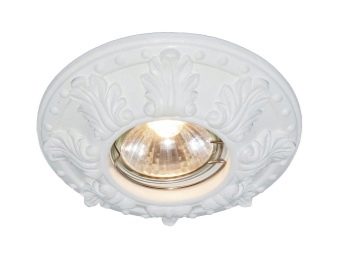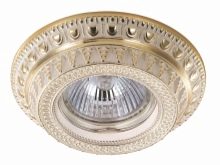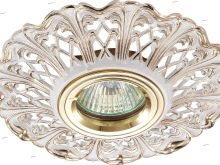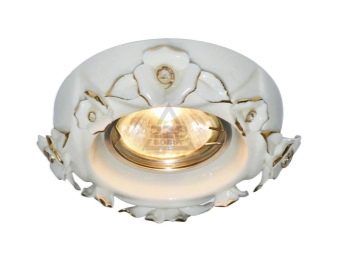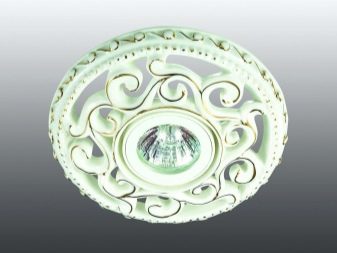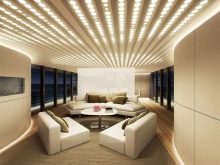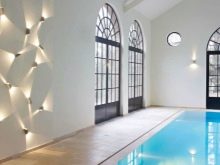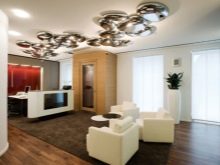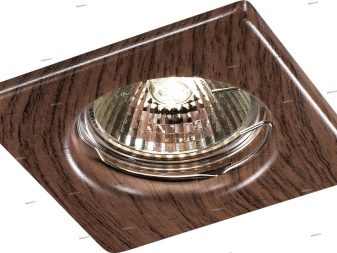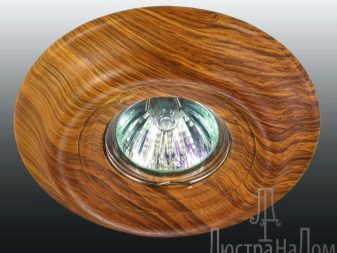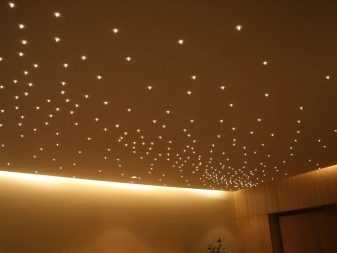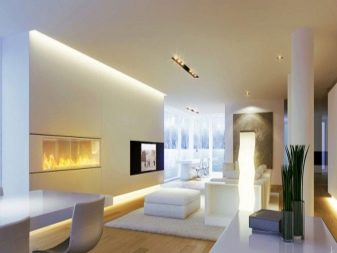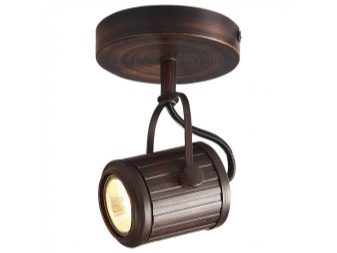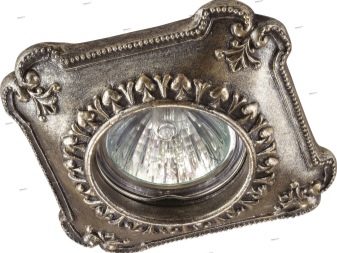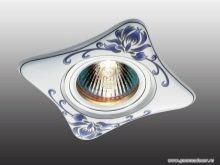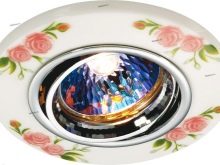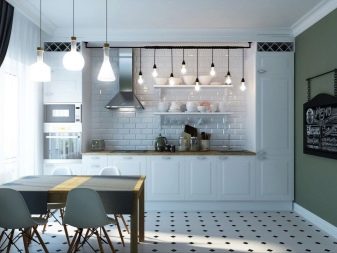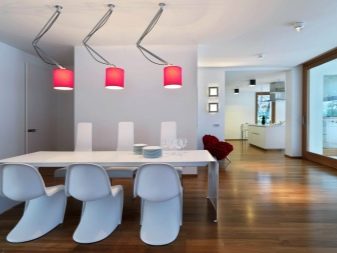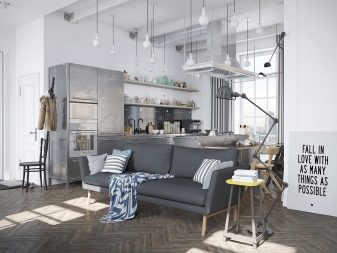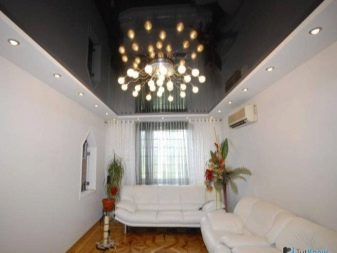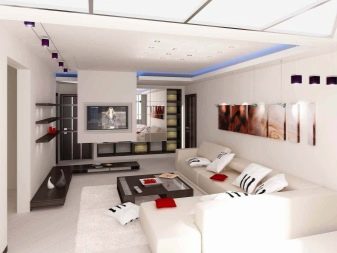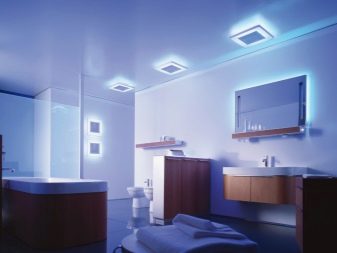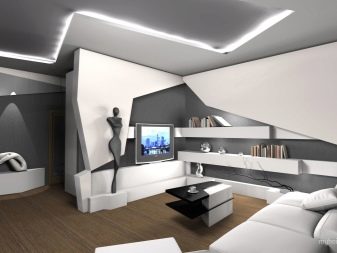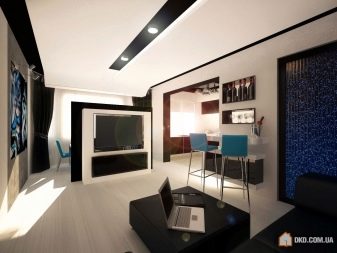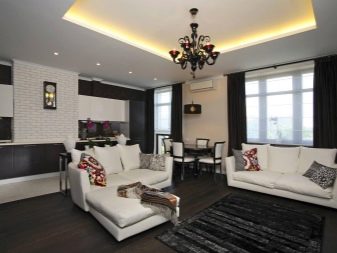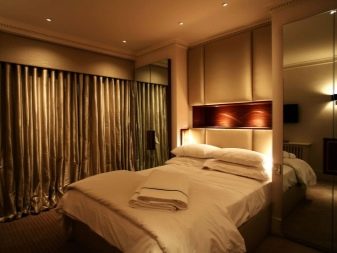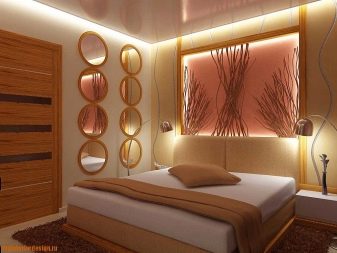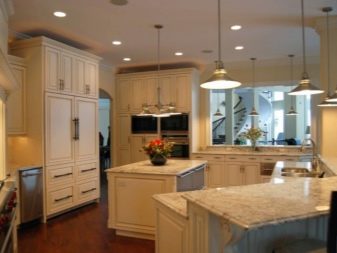Features spotlights
Competent organization of lighting is the key to success in the design of almost any room, be it an office, apartment or country cottage room. There are many ways to create a light space, the number of models of lamps sold in stores is incalculable, but the main thing in this process is to follow certain principles. The key one is a clear separation of the concepts of primary and secondary lighting. Almost ideal for the latter is the correct selection of spotlights.
What it is?
In fact, in the point of the lamp is nothing special and unique. These are quite ordinary products, capable, however, to surprise. As a rule, this technology refers to the use of separately openable lamps (any).The distance between them usually varies. from 20 to 40 cm.
In Western terminology they are also called chandeliers-spot (further we will use transliteration in the form of “spot lamps”, “spot chandeliers” or simply “spots”). Actually, the word “spot” literally means “place”, “spot”, which reflects the essence of the product - the lighting of a certain point-zone emanating from a given position.
The closest association for such lighting fixtures is theatrical spotlights, but this is not entirely correct. The fact is that under the spotlights is meant a special metal construction for the suspension of lamps; point devices have a much wider range of applications, rather than spotlights. They can be single, double or triple, wall and floor, overhead and ceiling - almost any. At the same time, the spectrum of using different types of lamps in such lamps is not limited by anything.
In visual terms, spotlights are isolated sources of directional light that can illuminate parts of a room or furniture, as well as create a shaded “diffuse” atmosphere in the room.
The design of such products is rich in innovation and discovery. There are models on the leg, on the tire, on the rod, with a motion sensor and a remote control. Exclusive design objects are often equipped with decorative interior pendants and other decorations. However, even the simplest spotlights are capable of producing a pleasant, matte light.
The appearance of such light sources is also sufficiently aesthetic. On sale you can find models made of wood, metal, plastic, glass, glossy and mirror, as well as designed for tint.
These items "light interior" can be used in many rooms: from the bathroom to the living room.
It is pleasant and effective, for example, to use a backlit sink. Recessed into almost any surface and directing light in the right direction, the lamps are able to give the interior an atmosphere of comfort and design completeness.
Advantages and disadvantages
Small single lighting devices have both advantages and disadvantages, so you need to use them wisely, and they are not suitable for all interiors and rooms.
Among the main advantages:
- Compactness.These are very small fixtures that will fit even in a very small room: a bedroom, a bathroom, etc. In addition, they are really and simply embedded into almost any surface: for example, in the shelf above the bath, chipboard sheet above the table or night table.
- Variability. The forms of such lighting devices allow using many types of lamps in them: from ordinary incandescent lamps to halogen, LED and even neon. You can vary and power. A very rich selection of models of the lamps themselves, which are suitable for many interior styles: classic, modern (high-tech, loft), colonial, modern.
- The effect of expanding space. The use of such devices makes the room visually wider and the ceilings higher. Of course, this effect is manifested only with proper design.
- Targeted lighting. Compact devices allow you to solve problems that can not be managed through basic lighting. For example, with their help, you can highlight a separate area, an object of furniture, or even select a light space. This is true in large rooms and studio apartments.With the help of points of light, you can divide the volume room into the dining, bedroom, living room and other areas.
- Manufacturability. Such products are now at the peak of fashion, so all the chips of progress can be found in this brand sector. Among them are unique designs with adjustments to the level of illumination, color temperature, as well as “smart” technologies that make it possible to track the natural human biorhythms and adapt the lighting to specific needs taking into account the time of day and season.
- In dimmable structures (with a built-in electronic dimmer switch), the consumer has the ability to independently control the level of illumination, or even create interesting visual effects — gradual ignition or extinction of light, color vibrations, and others. Dimmer as a device for the first time became widely used in the theater and only then “migrated” to the domestic sphere.
- Price. If you need to save money, then buying a spotlight is a very good idea. It is much cheaper than expensive chandeliers or its analogues. Of course, the price range is wide, but if necessary, you can always find an economy class product. The average spot price is lower than other bulbs.
At the same time, point designs have a number of significant drawbacks. Let's call the main ones:
- Limited scope. In some interiors such lamps are not applicable, for example, in radical classical stylisations. In too large rooms, living rooms with high ceilings, it is also difficult to find an adequate spot for spots. The only way out is to create an improvised "starry sky", but it is expensive and not always advisable.
- Used primarily as an additional light source. As the main one, you still have to “light up” traditional lamps and chandeliers, especially in spacious rooms.
- Difficulties with wiring. In suspended ceilings, other structures it is not recommended to use too powerful products that have the property to heat up very much. This limits the possibilities for the implementation of the ideas of light saturation and light transmission, and generally complicates the mechanics of organizing electric lighting in a room. Additional wires may appear, and in some parts of the room the light cannot be conducted at all.
Anyway, the installation will require the participation of a professional highly qualified electrician.This will help to avoid problems with fire safety.
- The need for redevelopment. Often, for the installation of spotlights it is necessary to "disassemble into bricks" almost the entire interior. Moreover, it is possible that even have to completely change the design of the bearing elements and the ceiling. If you later want to change something again, you will have to spend a lot of time and effort again on assembly and disassembly.
- They can overheat, and as a result, spoil the ceiling and other interior elements. In case of inattention to the spot wiring, the ways to cause a fire and a fire.
- Due to the nature of the design, it is often problematic to monitor the cleanliness of spotlights.
And one more thing - the spotlights on the market have quite a few competitors - the same floor lamps for the bedroom or extended LEDs for the bathroom, but they cannot fully replace all the wealth of functional spots.
Characteristic and design
The main components of spotlights are the cartridge and housing, the cover, as well as special mounts - usually they are flexible fixing elements, springs.As a rule, two clamps, but for reliability, you can use a larger number. Usually, the cartridge and fasteners are not visible, as they are located in the depth of the case, which can be made of various materials: from metal to plastic and ceramics. Usually, the body is solid, and the whole structure may somewhat resemble a slightly enlarged flashlight.
The lamp is inserted into the cartridge - almost any kind of product can be used, including incandescent lamps and LEDs. In stretch ceilings, chipboard or drywall should be controlled by the power of the lamps, as their overheating can lead to unpleasant consequences: from damage to the interior to the fire.
A cable is usually attached to the product - its length should be sufficient and should be selected taking into account the characteristics of the electrical wiring in the room.
A crown may also be required - to cut a hole for a lamp in the material - chipboard or plasterboard.
By design, all LEDs are divided into open and closed. The former are used in most rooms, the latter have an additional protective case (casing), which protects from moisture and dust. When buying products for the bathroom, pay attention to the indicator IP (Index of Protection), especially on the first two of its numbers, indicating dust and water resistance, respectively. The higher they are, the better. Ideally, they should be varied from 21 to 67 depending on the proximity to the open water (bathtub or sink).
Additional design elements include a variety of decor. The spotlights are very minimalist, but often it is emphasized by low-key relief patterns on the surface of the case. In modern styles, loft and high-tech is enoughhowever, quite often pendants, inlays with stones, shell rock, crystal, and stained glass are used to decorate the spot in the classical spirit.
However, the décor can shade the already dim light created by products, as well as contribute to the appearance of glare, so you should experiment with it carefully.
Kinds
There are many classifications of spotlights. Let's stop on several:
- By type of installation. Overhead products have a mounting platform in their structure and allow not to violate the integrity of the walls and the ceiling during fasteners. Recessed fixtures are suitable for frame bases, whether it is stretch ceilings, niches in the walls or drywall. There are also suspended light sources located at some distance from the surface.
- By mobility. Can be stationary or rotary. The latter are able to change the angle of illumination, and in some cases move forward, but require more reliable and high-quality mounting.
- According to the place of installation. There are models for exteriors (exterior, street lamps) and interiors. In a separate group stand out waterproof models for the bathroom.
- According to the type of fixtures used. With incandescent bulbs, with LEDs, neon or halogen lighting fixtures.
- By way of power supply. Either the luminaires are connected to the electrical network, or they run on batteries or a battery.
Purpose
Spotlights can be used for various purposes. There are several main categories:
- Classic interior or exterior. Will be suitable for lighting of premises, rooms, a verandah or the courtyard of the house adjoining territory. Such spots are usually mounted on the wall or ceiling.
- Furniture. Embedded in various interior items: shelves, chairs, chairs, beds, tables, bedside tables.
- For shop windows. Usually used in museums to illuminate exhibits, but can be used for a similar purpose in the home environment - for lighting, respectively, personal collections.Such lamps work under glass (if the showcase is glazed) and are, as a rule, much smaller in size than classical lighting fixtures. Note that if you plan to cover the graphics, you must comply with a number of technical standards, otherwise the collection may deteriorate.
Types of lamps
In spots, you can use different types of lamps, each of which has both its own advantages and disadvantages:
- Fluorescent. The most effective choice, since such lamps have a very favorable luminous efficiency. In large formats, they are used in public buildings, such as hospitals or schools; in the dotted version, the lack of spots in terms of the brightness of the light is “smoothed out”.
- Incandescent lamps. The cheapest option, but not always applicable. Not very well suited for suspended and suspended ceilings. Such products are very hot, and therefore increases the risk of fire.
- Energy-saving lighting. They give a very soft light and slightly warm. They may not be suitable for organizing a place to read or work, but at the same time they allow to create additional coziness and comfort through the diffused light effect.Often installed with a dimmer.
- Halogen (the term “halogen” is sometimes used around the world) lamps. In fact, also incandescent lamps, but with a lower heating temperature and better light output. Of the minuses - the possible presence of a specific "noise", especially when working with a dimmer.
- LED (LED) devices. Good light output, no problems with heating, plus ecological cleanliness. Very tech.
But at the same time, many LEDs are characterized by the so-called “flicker effect”, and the price is often significantly higher than that of other product categories.
Location options
Lamps should be installed in accordance with the power supply circuit. In the same room you can have several at once - two, three or more lamps. The optimal distance between them should be about 20-40 cm. A popular design is now "Starry sky"when the spotlights are installed at intervals on the entire surface of the ceiling. This scheme looks beautiful in large rooms with high ceilings, including rooms with columns.
Do not forget also that you need to install ceiling lights indented from the wall, preferably from 0.5 m, and at a certain height from the floor.
Forms
The shape of the product can be very different.On sale there are rectangular, round, square, flat and convex, thin and thickened, narrow models, tablet lamps. Some lighting devices are made in the form of stars, cylinders or roses. There are quite unusual designs that combine ornaments and intersections of complex geometric shapes.
Dimensions
Spots can be big, small and mini. In the case of round products, the size is determined by the diameter of the product and, accordingly, the hole that will have to be made in the wall, ceiling or on another surface in the case of the embedded model construction. It is better to do it with a minimum margin. The diameter of the mortise hole is usually indicated in the instructions. It is important to distinguish the external “decorative” diameter (it is larger and reaches on average up to 90 mm) with the diameter of the hole for the lamp: it is about a third smaller and usually ranges from 60 to 75 mm.
Materials
Various materials are used to make the body of spots. As a rule, these are either natural elements, for example, wood, or mixtures and alloys - from bronze to more complex compounds. Metal cases are widespread, bronze, from chrome.Glass is traditionally used in the design of the lighting devices themselves. The decor can also be multidimensional, often including materials such as crystal (crystal pendants). Lamps with crystal or inlaid with precious stones (or their imitations) will do for both classic and modern interiors. Another popular material is plastic: it is very light and easy to use, suitable for painting.
Colors
On sale there are models of a very wide color range. Often products are colored. Among monochrome popular black, white, red, green, blue, blue, beige, orange. These lamps are suitable for a bathroom or nursery, as well as a living room. However, colored, and especially multicolored lamps do not always fit into classic interiors.
Additional comfort and harmony of the living room and bedroom are able to give spots of brown or purple hues, wenge-colored or stylized wood.
Styles
Spotlights are suitable as an additional light source for almost all interiors, but when using them within each of the styles there are a number of features:
- Classic. It is better to avoid bright shades of the body. It is desirable to make the light itself warm and soft, a little diffused. Even if the target of the spot is to create a separate light spot in the room, the borders of the latter should be made blurred.
- Provence. Light aerial styling looks good, for example, the color of sea wave. The spot body can be blue, green, beige, white. This is a good opportunity to experiment with interesting design forms.
- Modern styles. For a loft, it is better to choose something that is not too complicated, for hi-tech and at all - minimalistic. It is reasonable to use turning lamps - this will make the light space noticeably more saturated and dynamic.
- Country In this style, spotlights are used infrequently, and their indicator of effectiveness comes first. Ideally, the spots here should be invisible, but useful. With their help, you can create additional "corners", cozy light spaces.
- Modern. The most common use of spot around the perimeter of the ceiling, adds the necessary style contrast to the main light source - usually a neat decorative chandelier.The alternative for large living rooms is the “starry sky”.
- Retro. In retro-styles, it is effective to embed spots in the walls, which allows not only to visually expand the space, but also to make it more harmonious and collected. If there are stairs in the room, you can mount the lamps in the floor, but in no case should they be too bright - it will destroy the atmosphere styled as “old times”.
- Scandinavian. You can use additional light sources in slatted ceilings. The temperature of the lighting should not be too high, the colors are cool, therefore, the body of the spot is better to pick light air shades. Suitable white, beige, blue.
Top manufacturers
Spotlights are manufactured by many companies in different countries of the world. All of them have both brand and national specifics. We give a brief overview of the market:
- German spots are traditionally very high quality. Their main attributes are usability, practicality and reliability. However, many models are devoid of any decor and made as simple as possible. Such a healthy minimalism is suitable for owners of small apartments. Among the firms can be identified Brilliant.
- Italians, on the contrary, often become “hostages” of the form. Their products are exquisite, often eclectic, but very rich in color. The most famous brands are Arte Lamp, Lightstar.
- Belgium. Very technological products, including swivel models. Large assortment: you can choose colors and shapes for almost every taste, but many manufacturers still focus on models for modern interiors. Therefore, the Belgian market sector is better to pay attention to those who prefer non-classical design. Company products are popular in Russia Massive.
- Russia. Firms Arlight, Ambrella other. More affordable in terms of prices than European products. At the same time they have good quality and good light output.
Among other popular countries-producers, the quality of which there is no doubt, should be highlighted Poland, Japan and Holland.
How to choose?
When choosing a particular spot model, first of all, you should decide on where and on which ceiling it will be used. For wooden single-level ceilings are not suitable too bright products. At the same time, in plasterboard and slatted ceilings you can embed almost any design novelty.
For the bedroom is better to buy energy-saving lamps. In the hallway, hall, living room or hallway, you can safely experiment with more accentuated light and color design of the buildings. For the bathroom should buy shock-resistant, moisture and dust-proof products.
Do not forget that the spots can be embedded not only in the ceiling, PVC wall panels, but also in the floor - this solution will be relevant for the stairs or the attic. Lamps for the floor should be as shock-resistant as possible, especially if there are pets in the house or apartment.
And the last moment - when choosing a lamp Do not evaluate too strictly its light qualities. Spot is a source of additional lighting and most likely, it will in any case need to be combined with a chandelier.
Fashionable examples of stylish interior design
In the spacious bathroom, in addition to the main lighting, two LEDs can be embedded in the shelf above the sink or on the sides at a distance of about 20-30 cm from each other. Turning them on (without the main source) will provide the room with enough light and create a sense of coziness and intimacy in the bathroom.
In the large or middle living room you can create an improvised "starry sky" with the help of spots.Lamps should be placed along the radius of the ceiling in several rows (uneven) at a distance of at least 30-40 cm from each other. It may take up to two dozen lighting fixtures. This design is appropriate for the living room, decorated in bright colors and not furnished with heavy antique furniture.
An interesting option for the bedroom is to place 10-12 lamps (depending on the size of the room) above the bed at a distance of 30-40 cm from each other. You can use dimmable devices. They will create a shape of a light rectangle or square. The lighting should be “blurred”, not too accented, soft - to achieve this effect it is better to use energy-saving lamps. With a radical design, the use of neon lighting is not excluded.
And the last idea is for the kitchen. In it, spotlights can be used to highlight specific interior items: sinks, dining areas (tables), refrigerators and others, or be located around the perimeter of the ceiling. Actual not only ceiling, but also wall models, as well as hanging (over a large table) products.
In a small kitchen, with the help of spots, it is possible to highlight an electric stove (often, however, light sources are built into its design).A beautiful solution would be the division into light areas of individual parts of the kitchen: places for cooking, for family dinner, for relaxing. Such zoning will allow you to use spots with maximum efficiency.
In general, point lamps can look spectacular in almost any room and at the same time perform important practical functions. In addition, the use of such lamps is always a large field for design experiments, the ability to fully reveal their aesthetic imagination.
How to choose lamps for stretch ceilings, see below.
